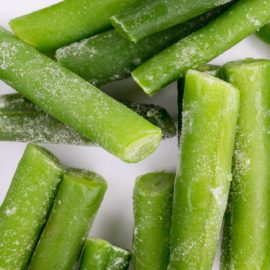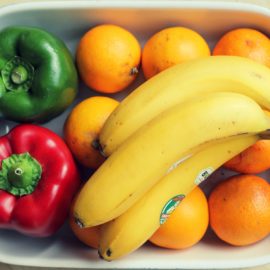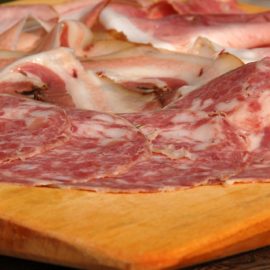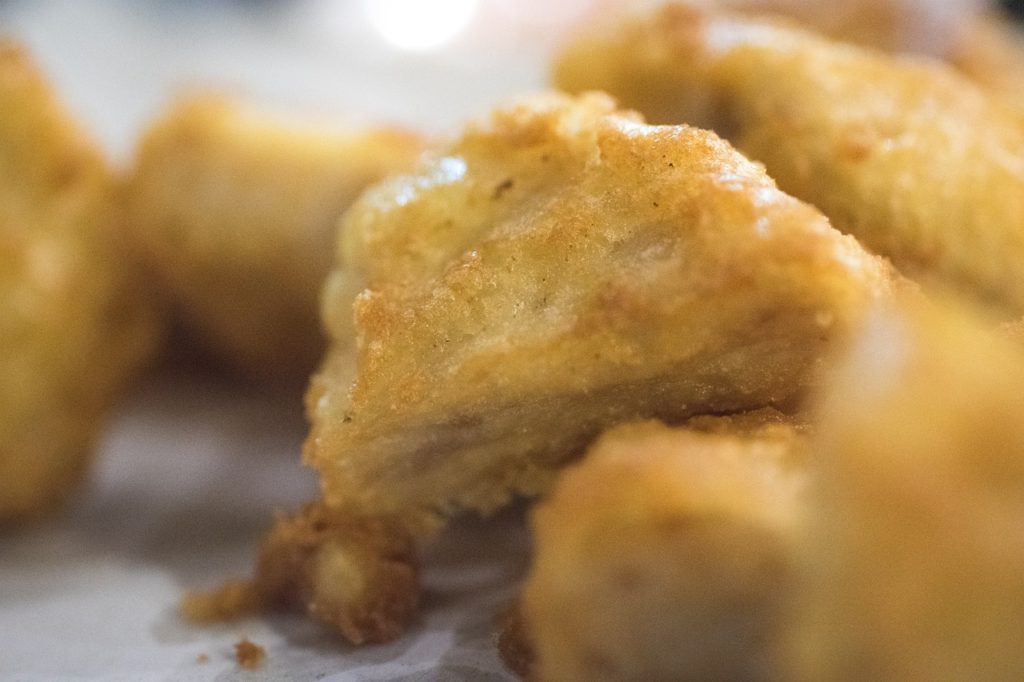
In today’s world of processed and packaged foods, a mysterious acronym often finds its way onto ingredient labels – TBHQ. Tertiary Butylhydroquinone, or TBHQ for short, is a synthetic antioxidant that plays a crucial, albeit inconspicuous, role in many foods we enjoy today. Yes, that means TBHQ does not occur naturally in significant amounts in foods. This unassuming compound might not be a household name, but its presence is pervasive, contributing to the extended shelf life and preservation of countless food products.
So what exactly is tertiary butylhydroquinone (TBHQ) in foods?
Table of Contents
WHAT IS TERTIARY BUTYLHYDROQUINONE (TBHQ) IN FOODS?
Antioxidants found in food play a crucial role in halting or decelerating oxidative reactions. Oxidation, a chemical process, has the potential to induce the deterioration of fats, oils, and other constituents within food, resulting in spoilage, the emergence of undesirable flavors, and the degradation of nutrients.
In large-scale food manufacturing, many companies favor synthetic antioxidants over naturally derived antioxidants (vitamins and citrus extracts). They typically do so because synthetic ones are cost-effective and consistent in providing that function. An example of this is tertiary butlyhydroquinone or TBHQ.
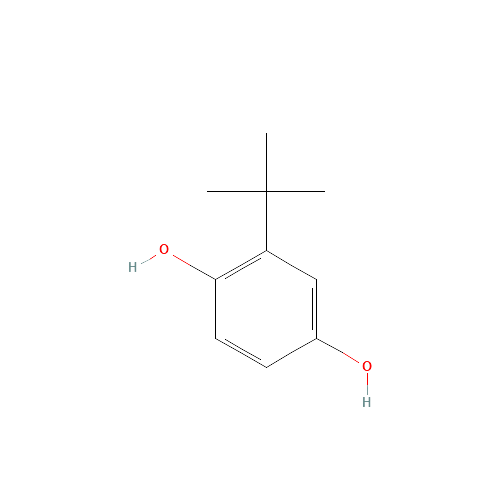
Tertiary Butylhydroquinone (TBHQ) is derived from hydroquinone, a naturally occurring phenolic compound (found in green tea). It consists of a hydroquinone core with a tertiary butyl group (t-butyl) attached to one of the hydroxyl groups. This t-butyl group enhances its stability and antioxidant properties.
TBHQ is a white to pale, crystalline powder with a faint aromatic odor. Its primary function in food is to inhibit the oxidation of fats and oils by acting as a free radical scavenger.
Free radicals are highly reactive molecules with unpaired electrons that can damage other molecules within the food matrix.
When TBHQ comes into contact with free radicals, it readily donates a hydrogen atom from its hydroxyl group to neutralize the free radical, effectively stopping the chain reaction of oxidation. By interfering with this process, the sensory characteristics and overall freshness of food products are retained. This is especially useful for those with longer shelf lives or that are prone to spoilage.
To make it more effective, TBHQ is often used in combination with other antioxidants like BHA (butylated hydroxyanisole) or BHT (butylated hydroxytoluene). These combinations can provide more comprehensive protection against various types of oxidation.
HOW IS IT MADE?
The production of TBHQ typically begins with the oxidation of p-cresol, a compound derived from petroleum. It is a colorless liquid with a strong phenolic odor. P-cresol is used in a variety of industrial applications, including the production of disinfectants, pesticides, and herbicides. The oxidation process involves the use of chemicals such as sulfuric acid and air or oxygen. In this reaction, p-cresol is transformed into hydroquinone.
The next step is the conversion of hydroquinone into tertiary butylhydroquinone. This is achieved by alkylating hydroquinone with isobutylene, an isomer of butene, using a strong acid catalyst like sulfuric acid or hydrochloric acid. The reaction results in the replacement of a hydrogen atom in hydroquinone with a tertiary butyl group (t-butyl), forming TBHQ.
The synthesized TBHQ is then purified to remove any impurities or byproducts. This purification process typically involves washing, filtration, and crystallization. After purification, the TBHQ is often dissolved in a suitable solvent to create a concentrated solution, which can be used as an additive in various food products.
It’s worth noting that the production of TBHQ requires careful control of reaction conditions and the use of specialized equipment to ensure the purity and safety of the final product.
FOODS THAT COMMONLY CONTAIN TERTIARY BUTYLHYDROQUINONE (TBHQ)
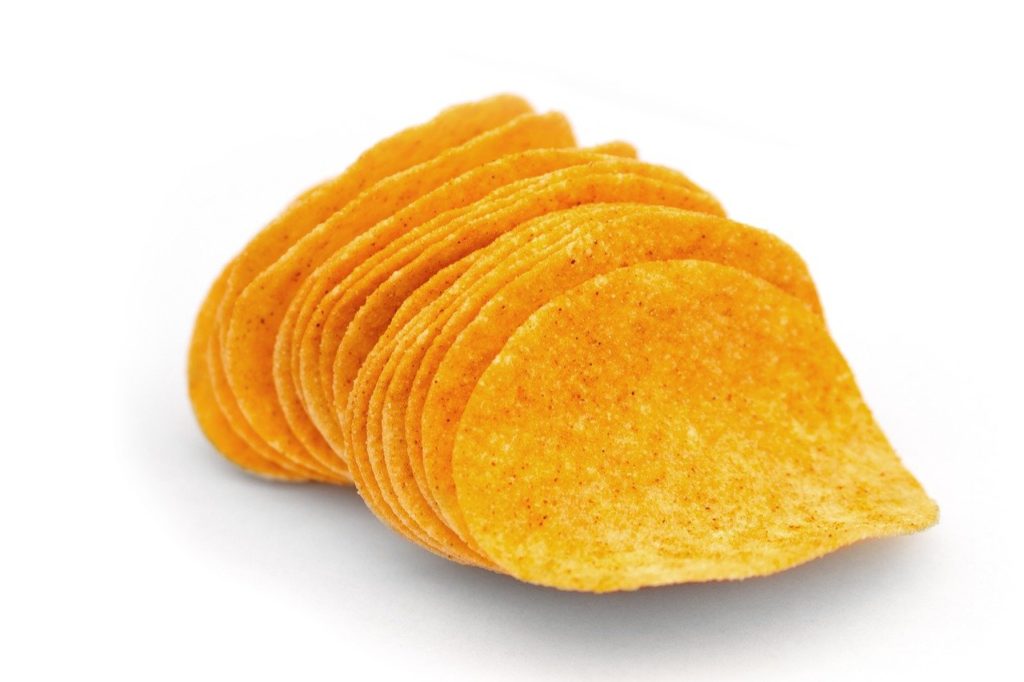
Breakfast cereals
High-fat breakfast cereals are prone to oxidative deterioration, which can lead to rancidity and the development of off-flavors. But TBHQ’s chemistry allows it to effectively combat this issue by inhibiting the oxidation of fats and oils present in the cereal and its added ingredients.
Processed meats
Processed meats like hot dogs and sausages frequently include fats and oils that are prone to oxidation. TBHQ serves to prevent this process by capturing and neutralizing free radicals, which are extremely reactive molecules responsible for initiating the oxidative reactions responsible for the development of rancidity in fats and oils.
Fast food items
Certain fast-food chains incorporate TBHQ into the coatings of their fried chicken products (including chicken nuggets). This preserves the taste, texture, and overall quality of the fried batter. The process of frying exposes the chicken to high temperatures and oxygen, which can trigger oxidative reactions in the frying oil and the batter.
Snacks
TBHQ is frequently employed in the production of potato chips to enhance their shelf life and preserve their quality. When potato chips are fried in oil, the fats and oils used can be susceptible to oxidation. TBHQ is added to the chips to counteract this oxidation process, ensuring that the chips remain crisp and flavorful for an extended period after manufacture.
Cooking oils
Vegetable Oils, commonly used in various culinary applications, including deep frying, often incorporate TBHQ. This addition serves to significantly enhance the longevity and stability of cooking oils, ensuring they remain suitable for repeated use without rapid deterioration.
Aside from impeding oxidative reactions, it also helps retain the oil’s smoke point, and withstands extended periods of high-temperature cooking. This makes it a cost-effective choice for commercial food establishments.
However, it’s imperative to adhere to recommended guidelines for oil reuse and not solely rely on TBHQ to indefinitely prolong oil life. Even with TBHQ, oil quality will eventually deteriorate due to factors like food particle contamination and thermal breakdown. Therefore, regular oil filtration and replacement remain necessary to ensure food safety and the desired taste and texture of fried foods.
Processed Nuts
Processed nuts and seeds, ranging from roasted almonds to seasoned cashews, may incorporate TBHQ as an essential preservative. This addition plays a crucial role in maintaining the freshness and extending the shelf life of these delectable snacks.
Nuts’ natural oils and fats are susceptible to oxidation. By introducing TBHQ into the processing of these snacks, manufacturers can effectively counteract this oxidation process. TBHQ acts as an antioxidant, stabilizing the fats and oils within the nuts and seeds, thus preserving their original flavor, texture, and aroma.
Baked goods
Bakery products sometimes contain TBHQ as an antioxidant and preservative. The fats and oils present are prone to oxidative reactions. TBHQ’s introduction into the production of bakery items addresses oxidation, a common challenge to fatty ingredients like butter and shortening. This practice is particularly prevalent in baked goods with elevated fat content.
SAFETY CONCERNS
Regulatory bodies such as the U.S. Food and Drug Administration (FDA), the Joint FAO/WHO Expert Committee on Food Additives (JECFA), and the European Food Safety Authority (EFSA) have conducted safety assessments of TBHQ. These agencies have deemed TBHQ safe for consumption in food products when used within established regulatory limits.
The FDA has set a usage limit for TBHQ at 0.02% of fat/oil content in food. In the European Union, TBHQ is identified by the E number E319 and is an approved additive with an acceptable daily intake (ADI) of 0.7 mg/kg body weight. This standard was established by the JECFA in 1998.
While these regulatory bodies have generally deemed TBHQ safe when used as intended, some concerns persist.
Allergic reactions
TBHQ has been linked to occasional reports of allergic responses and skin sensitivities in a small subset of individuals. These allergic reactions may manifest as skin rashes, itching, and, in severe instances, gastrointestinal discomfort and respiratory difficulties. In a study conducted in Michigan, it was observed that TBHQ can stimulate T cells, a component of the body’s immune system, to release specific proteins that could potentially induce allergies to foods like nuts, milk, eggs, wheat, and shellfish.
It’s important to emphasize that such occurrences are relatively uncommon.
Carcinogenicity
Some researches have revealed that TBHQ may be carcinogenic, especially at high doses. However, the evidence is ambiguous in this aspect, and more research is needed to establish a solid link between TBHQ and cancer.
TBHQ has been recognized as a Group 3 carcinogen by the International Agency for Research on Cancer (IARC). This indicates it is “not classifiable in terms of its carcinogenicity to humans.” This classification is based on the scant evidence of carcinogenicity in animals and the absence of carcinogenicity in humans.
The FDA assessed the available information and found that, when used as recommended, TBHQ is safe for use as a food additive. The agency also stated that the levels of TBHQ found in food products are far lower than those found to be carcinogenic in animals.
It should be noted that all chemicals have the potential to be dangerous if eaten in large quantities. This is also true of TBHQ. TBHQ levels in food products, on the other hand, are extremely low. As a result, the risk of acquiring cancer from eating TBHQ is extremely low.
